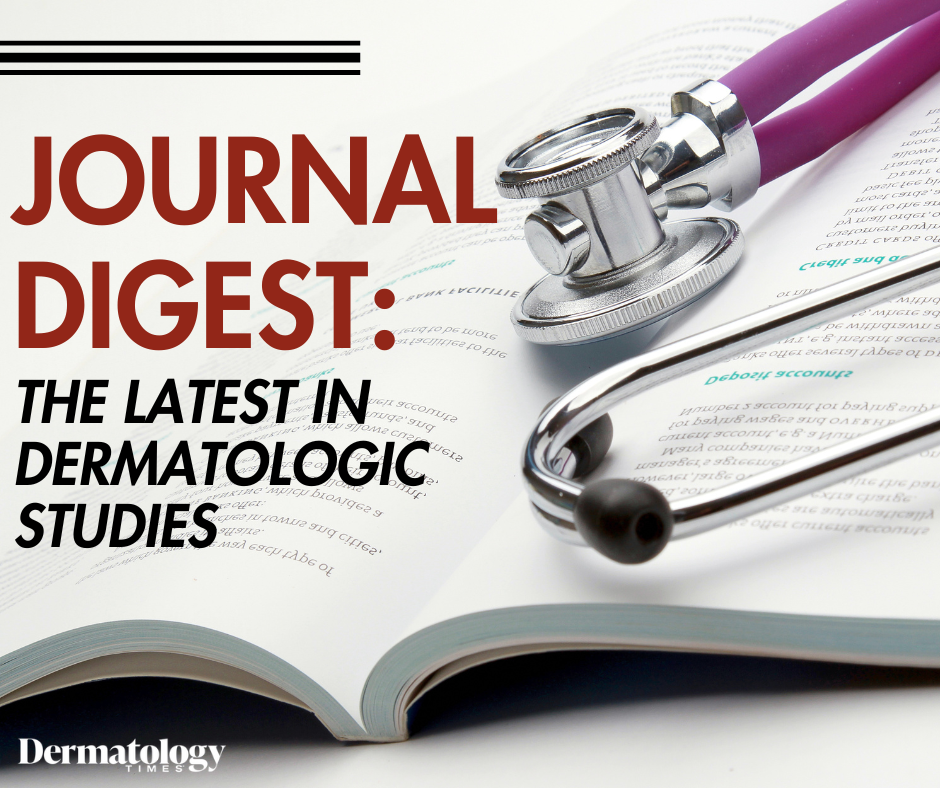- General Dermatology
- Eczema
- Chronic Hand Eczema
- Alopecia
- Aesthetics
- Vitiligo
- COVID-19
- Actinic Keratosis
- Precision Medicine and Biologics
- Rare Disease
- Wound Care
- Rosacea
- Psoriasis
- Psoriatic Arthritis
- Atopic Dermatitis
- Melasma
- NP and PA
- Skin Cancer
- Hidradenitis Suppurativa
- Drug Watch
- Pigmentary Disorders
- Acne
- Pediatric Dermatology
- Practice Management
- Prurigo Nodularis
News
Article
Journal Digest: June 4
Author(s):
This week’s collection of the latest dermatologic studies includes the use of digital communication for patients with hidradenitis suppurativa (HS), rituximab for pediatric patients with pemphigus, a case report of primary oral extramammary Paget disease, and the efficacy and safety of LAight therapy for HS.

Journal of the European Academy of Dermatology and Venereology: Usage of Digital Information and Communications Technologies in Patients With Hidradenitis Suppurativa
A recent letter to the editor by Pedersen et al reviewed the use of information and communication technologies (ICT) among adult patients with hidradenitis suppurativa (HS) at Bispebjerg Hospital. Data were collected via clinical examination and surveys from 48 patients, mostly female (79.2%) with an average age of 38.4 years. All patients had internet access, and the majority used one-to-one (dialogic) and one-to-many (informative) ICT platforms daily, with web browsers (91.7%) and Facebook/Messenger (81.3%) being the most popular. No significant associations were found between ICT usage and disease severity or symptom burden, except for a longer disease duration in many-to-many (social) ICT users. Patients preferred one-to-many ICTs for general and HS-specific information, with email being the favored method for receiving HS-related information. According to Pedersen et al, their review highlights the need to develop high-quality HS informational resources that align with patients' preferred ICT platforms, particularly web browsers.1
International Journal of Dermatology: Diagnosis, Treatment, and Long-term Outcomes of Pediatric Pemphigus: A Retrospective Study at Tertiary Medical Centers
Renert-Yuval et al’s retrospective study evaluated 12 pediatric patients with pemphigus from 3 Israeli outpatient clinics between 2000 and 2023. The cohort, with a mean age of 10.7 years, included an equal male-to-female ratio. The diagnosis was delayed by an average of 11.1 months, often due to misdiagnoses. All patients initially received high-dose systemic corticosteroids (sCS), but only 25% achieved remission with sCS alone. Rituximab, used as a second- or third-line treatment in 41.7% of patients, led to remission in most cases. According to the study authors, their findings emphasize pediatric pemphigus' chronic nature and suggest rituximab as a potentially effective early treatment option.2
Journal of Cutaneous Pathology: Unusual Case of Extramammary Paget Disease of the Oral Mucosa: A Case Report and Literature Review
Eilers et al reviewed a case of primary oral extramammary Paget disease (EMPD), a rare intraepidermal neoplasm, in an 81-year-old male patient misdiagnosed initially as lichen planus. Histopathology revealed Paget cells positive for CK7 and AR, suggesting an apocrine origin despite the oral mucosa's lack of apocrine glands. According to the study authors, the rarity of oral EMPD complicates diagnosis and treatment. If dermatology clinicians encounter EMPD, Eilers et al emphasized the importance of biopsy for persistent lesions, as primary oral EMPD generally has a good prognosis.3
Journal of the German Society of Dermatology: Real-World Effectiveness and Safety of The Laight-Therapy In Patients With Hidradenitis Suppurativa
A recent study by Strobel et al investigated the efficacy and safety of LAight therapy for hidradenitis suppurativa (HS) using real-world data from 3437 patients. LAight therapy, a combination of radiofrequency and intense pulsed light, was administered biweekly alongside topical clindamycin, showing significant improvement in disease severity measured by the Hidradenitis Suppurativa Severity Score System (IHS4), pain, and quality of life (DLQI) over 26 weeks. Patients with Hurley stages I-III experienced substantial benefits, with over 50% achieving a 55% reduction in IHS4. Pain and DLQI scores decreased significantly, with higher BMI slightly moderating pain reduction. Most patients reported positive outcomes and minimal adverse effects, demonstrating LAight therapy as a potential well-tolerated treatment option for HS across all severity stages.4
References
- Pedersen NH, Nielsen VW, Holgersen N, et al.Usage of digital information and communications technologies in patients with hidradenitis suppurativa. JEADV Clin Pract. Published online June 2, 2024. https://doi.org/10.1002/jvc2.474
- Renert-Yuval Y, Baum S, Greenberger S, et al. Diagnosis, treatment, and long-term outcomes of pediatric pemphigus: a retrospective study at tertiary medical centers. Int J Dermatol. Published online May 31, 2024. doi:10.1111/ijd.17251
- Eilers G, Jordan RC. Unusual case of extramammary Paget disease of the oral mucosa: A case report and literature review. J Cutan Pathol. Published online May 29, 2024. doi:10.1111/cup.14663
- Strobel A, Schultheis M, Staubach P, et al. Real-world effectiveness and safety of the LAight-therapy in patients with hidradenitis suppurativa. J Dtsch Dermatol Ges. Published online May 28, 2024. doi:10.1111/ddg.15403





